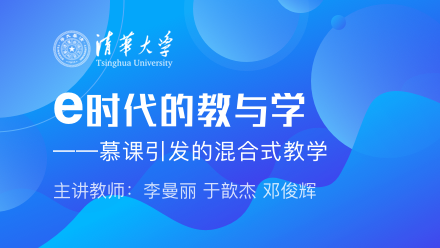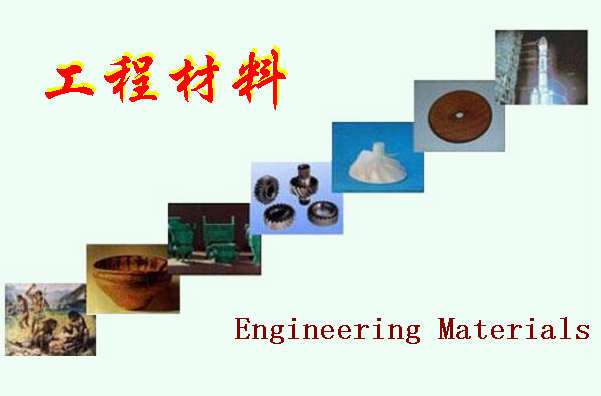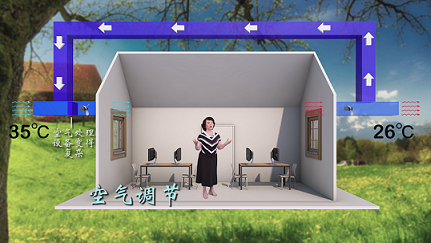
当前课程知识点:Overview of China > 第三章 理解中国 Understanding China > 3.2 中国科技 China‘s Science and Technology > 3.2.3 古代青铜器和农业科技 Ancient bronzes and agricultural technology
返回《Overview of China》慕课在线视频课程列表
朋友 您好 欢迎您 走进中国
Hello! Welcome to the Overview of China
了解更多关于中国的知识
and know more about China.
今天我们来学习中国古代科技中的青铜器和农业科技
Today we will learn about bronzes and agricultural science and technology in ancient China.
青铜器
Bronze Ware
中国有着发达的青铜文化
China has a developed bronze culture.
4000多年以前的夏朝就开始了青铜器的铸造
More than 4000 years ago, the Xia Dynasty began the casting of bronze ware.
商朝与西周时期是青铜器的鼎盛时期
The Shang Dynasty and the Western Zhou Period were the heyday of the bronze ware
青铜器包括容器 乐器 礼器 兵器 车马器等
Bronze ware includes containers, musical instruments, sacrificial vessels, weapons, chariots and horses, etc.
涉及生活的各个方面
Which involves all aspects of life.
一般认为
In general,
青铜器绝大部分是采用范式铸造法制作的
most of the bronzes are made by normal form casting.
鼎 鼎曾作为一种炊具
The tripod was used as a cooker.
逐渐演变成一种礼器
It evolved into a ritual instrument,
成为权力与财富的象征
and became a symbol of power and wealth.
在西周时期
In the Western Zhou Dynasty,
鼎与编钟一起成为衡量人身份地位的标志
Tripod and Chime Bell together become a measure of the status of the symbol.
后母戊鼎
The Houmuwu square cauldron (ding)
河南安阳出土的商代晚期的后母戊鼎 曾被称为司母戊鼎
The Houmuwu Ding unearthed in Anyang, Henan in the late Shang Dynasty was once called Simuwu Ding,
重约832.84千克
weigh about 832.84kg
高133厘米
height 133cm,
口长110厘米
mouth length 110cm,
宽79厘米
width 79cm
是迄今为止世界上出土鼎中最大最重的青铜器
It is the largest and heaviest bronze ware that has been unearthed in the world to date
是一种祭祀青铜器
It's a kind of sacrificial bronze.
它的内壁铸铭 后母戊 三字
Three characters are inscribed on the inside of the body: "Hou Mu Wu"
是商王母亲的庙号
Which is the posthumous name of Fu Hao, the mother of a Shang King.
后母戊鼎的铸造
The casting of the Houmuwu Ding,
不仅规模宏大
is not only on a large scale,
而且做工精细
but has a fine workmanship.
足以代表高度发达的商代青铜文化
It is enough to represent the highly developed bronze culture of the Shang Dynasty,
现藏于中国国家博物馆
which is collected now in the National Museum of China.
莲鹤方壶
Lotus and Crane Rectangular Hu
出土于河南新郑的莲鹤方壶
The Lotus and Crane Rectangular Hu unearthed in Xinzheng, Henan Province.
是春秋中期青铜制的盛酒或盛水器
It is a bronze wine or water holder in the middle of the Spring and Autumn Period.
莲鹤方壶 为方壶造型
The Lotus and Crane Rectangular Hu is a square-pot model.
有盖 双耳 圈足 重心在下腹部
It has cap, ears, circle foot, and the center of gravity is in the lower abdomen.
遍饰于器身上下的各种附加装饰
A variety of additional decorations on the body,
不仅造成异常瑰丽的装饰效果
not only causes the extraordinarily magnificent decoration effect,
而且反映了在春秋时期青铜器艺术审美观念的重要变化
but also reflects the important change of the aesthetic concept of the bronze ware art in the Spring and Autumn Period.
一件收藏于北京故宫博物院青铜馆
One is in the Palace Museum of Beijing
一件收藏于河南博物院
One is in the Henan Museum.
农业科技
Agricultural Science and Technology
中国农业具有悠久的历史
China's agriculture has a long history
是粟和水稻的原产地
It is the origin of millet and rice.
农业科技发达
China has advanced agricultural science and technology.
水稻 茶树和蚕桑的培育技术一直领先世界
The cultivation technology of rice, tea and sericulture has been leading the world.
水稻栽培
Rice Cultivation
中国是世界上最早栽培水稻的国家
China is the first country in the world to grow rice.
七千多年前中国长江流域就开始种植水稻
Rice began to be planted in the Yangtze River Basin of China more than 7,000 years ago.
在湖南道县玉蟾岩遗址中
In the site of Yuchanyan, the province of Hunan, China,
出土了目前世界上已发现的年代最早的水稻实物标本
the earliest in-kind samples of rice that have been found in the world have been unearthed,
距今约1万年
it was planted about 10,000 years ago.
考古专家在江苏 湖南等地距今6000多年的新石器时代遗址中
Archaeologists have also found paddy fields and irrigation ditches
还发现了水稻田与灌溉的水沟
in Neolithic sites more than 6000 years ago in Jiangsu, Hunan and other places.
这些考古证据足以证明中国栽培水稻的悠久历史
This archaeological evidence is enough to prove the long history of rice cultivation in China.
茶树栽培
Tea Cultivation
中国是茶树的原产地
China is the origin of tea plants,
也是世界上最早利用茶叶和人工种植茶树的国家
It is also the first country in the world to use tea and grow tea trees artificially.
世界其他产茶国都是直接或间接引种于中国
The other tea-producing countries in the world are introduced directly or indirectly from China
商周时期的甲骨文中就有关于茶树栽培的记载
In the Shang-Zhou Dynasties, there were records about the cultivation of tea trees.
唐代时期
In the period of Tang Dynasty,
对于茶树的栽培管理进行了系统总结
the cultivation and management of tea plants were systematically summarized.
宋代的茶树管理更注重精耕细作
Tea management in Song Dynasty paid more attention to intensive cultivation,
采用桐茶间作
Using paulownia tea intercropping
以提高茶叶的品质
was to improve the quality of tea.
明清时期
In the Ming and Qing Dynasties,
人们对茶树的繁殖 间作和修剪等有了更多的新技术和新方法
there are more new techniques and methods for the reproduction, intercropping and pruning of tea trees
都江堰
Dujiangyan Irrigation System
中国古代农业发展中
In the development of China's ancient agriculture,
十分重视水利灌溉工程的修建
It attachs great importance to the construction of water conservancy and irrigation projects
战国时期的秦国太守李冰父子修建的都江堰就是其中的代表
Dujiangyan, built by Li Bing and his son, the magistrate of Qin state during the Warring States period, is one of the representatives,
都江堰由分水鱼嘴 飞沙堰 宝瓶口等部分组成
which is composed of a water diversion fish nozzle, a flying sand weir, a bottle mouth and other parts.
两千多年来一直发挥着防洪灌溉的作用
It has been playing the role of flood control and irrigation for more than two thousand years,
使成都平原成为沃野千里的 天府之国
make Chengdu Plain a "land of abundance".
是全世界迄今为止年代最久 唯一留存
It's the oldest in the world to date, the only one remained.
仍在一直使用 以无坝引水为特征的宏大水利工程
a large water conservancy project, which is still in use and is characterized by no dam diversion.
凝聚着中国古代劳动人民勤劳 勇敢 智慧的结晶
It embodies the diligence, courage and wisdom of the working people in ancient China
2018年 被列入世界灌溉工程遗产名录
In 2018, it is included in the World Irrigation Project Heritage List
好 中国古代科技之旅就到这里
OK,this is the end of Ancient Chinese Science and Technology.
让我们稍作休息
Let's have a rest,
接着再开启新的旅程吧
and to start a new journey of China.
-1.1 初识中国 First acquaintance of China
--1.1 初识中国 First acquaintance of China
-1.2 人文中国 Humanistic China
-1.3 美丽中国 Beautiful China
-1.4 绿色中国 Green China
-1.5 民俗中国 Folklore China
-小测验 Quiz
-2.1 畅行中国 Unimpeded China
--2.1.1 中国交通方式 China's mode of transportation
--2.1.2 中国著名人文景观 Famous cultural landscape in China
--2.1.3 中国著名自然景观 Famous natural landscape in China
-2.2 乐居中国 Happy living in China
--2.2.1 中国传统官式建筑 Traditional Chinese official architecture
--2.2.2 中国传统民居 Traditional Chinese houses
--2.2.3 中国现代城镇的发展 The development of modern towns in China
-2.3 食在中国 Eating in China
-2.4 穿在中国 Wear in China
-2.5 医在中国 Medicine in China
-小测验 Quiz
-3.1 中国历史 Chinese History
--3.1.1.走向大一统的中华文明 Towards the unification of Chinese civilization
--3.1.2 多民族融合的封建帝国 A multi-ethnic feudal empire
--3.1.3 日新月异的和平中国 Peaceful China changing with each passing day
--小测验 Quiz
-3.2 中国科技 China‘s Science and Technology
--3.2.1 中国古代四大发明 Four great inventions in ancient China
--3.2.2 中国古代数学和天文学 Ancient Chinese mathematical astronomy
--3.2.3 古代青铜器和农业科技 Ancient bronzes and agricultural technology
--3.2.4 中国新四大发明 Four new inventions in China
--3.2.5 国防与民生科技 National defense and people's Livelihood Science and technology
--3.2.6 中国航空航天 China Aerospace
--小测验Quiz
-3.3 中国经济 China's Economy
--3.3.1 中国古代农业和手工业 Ancient Chinese agriculture and handicraft industry
--3.3.2 中国古代商业 Ancient Chinese Commerce
--3.3.3 中国现代经济政策和体制 China's modern economic policy and system
--3.3.4 中国经济发展的成就 Achievements in China's economic development
--3.3.5 中国经济发展的新趋势 The new trend of China's economic development
--小测验Quiz
-3.4 中国教育 Education in China
--3.4.1 古代哲学和教育思想 Ancient philosophy and educational thought
--3.4.2 古代学校教育 Ancient school education
--3.4.3 科举制度 Imperial examination system
--3.4.4 扫盲运动与高考 Literacy campaign and college entrance examination
--3.4.5 中国现代教育体系 China's modern education system
--3.4.6 国际教育交流与合作 International educational exchange and cooperation
--小测验Quiz
-4.1 文学欣赏 Literary Appreciation
--4.1.1 《诗经》和《离骚》Book of Songs and Li Sao
--4.1.2 诸子散文 Philosophical Prose
--4.1.3 唐诗宋词 Chinese Tangsong Poetics
--4.1.4 四大名著 Four Masterpieces
--4.1.5 中国现代文学 Modern Chinese Literature
--4.1.6 中国当代文学 Contemporary Chinese Literature
--小测验 Quiz
-4.2 音乐欣赏 Music Appreciation
--4.2.1 中国传统音乐与乐器 Traditional Chinese Music and Musical Instruments
--4.2.2 中国古典十大名曲 Ten Famous Classical Chinese Songs
--4.2.3 五彩缤纷的现代音乐 Colorful Modern Music
--小测验 Quiz
-4.3 戏曲欣赏 Opera Appreciation
--4.3.2 豫剧和其他地方戏 Henan Opera and Other Local Operas
--4.3.3 皮影戏和样板戏 Shadow Play and Model Play
--小测验 Quiz
-4.4 书画欣赏 Appreciation of Painting and Calligraphy
--4.4.1 文房四宝及书体 Four Treasures of Study and Calligraphy Style
--4.4.2 书法艺术习成及名家名作 Calligraphy and Masterpieces
--4.4.3 中国画的工具及分类 Tools and Classification of Chinese Painting
--4.4.4 中国绘画名家名作 Famous Works of Chinese Painters
--4.4.5 中国书画艺术思想 The artistic Thought of Chinese Painting and Calligraphy
--小测验 Quiz
-4.5 影视欣赏 Film Appreciation
--4.5.3 20世纪90年代至今中国电影欣赏 Chinese film appreciation since 1990s
--小测验 Quiz
-4.6 武术欣赏 Chinese Martial Arts Appreciation
--4.6.1 中国武术的源流与发展 The Origin and Development of Chinese Martial Arts
--4.6.2 中国武术流派 Chinese Martial Arts schools
--4.6.3 十八般武器 18 Weapons of Martial Arts
--4.6.4 中国武术文化欣赏 Appreciation of Chinese Martial Arts Culture
--小测验 Quiz
-5.1 源远流长的古代中外交流 Ancient exchanges between China and foreign countries
--5.1源远流长的古代中外交流 Ancient exchanges between China and foreign countries
-5.2 丰富多彩的现代中外交流 Rich and colorful modern exchanges between China and foreign countries
--5.2 丰富多彩的现代中外交流 Rich and colorful modern exchanges between China and foreign countries
-小测验 Quiz
-期末考试 Final Examination
--期末考试 Final Examination



